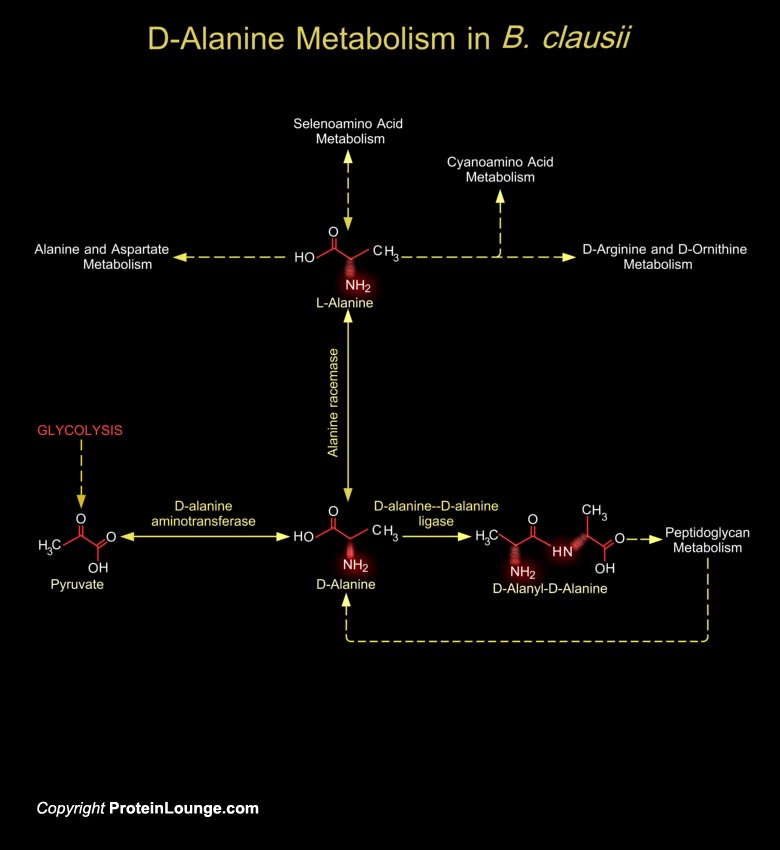
The spore-bearing alkaliphilic Bacillus species constitute a large, heterogeneous group of microorganisms which are now being investigated in order to better understand the physiology, biochemistry, and especially molecular genetics underlying the behavior of alkaliphilic bacteria. As alkaliphilic Bacillus strains produce enzymes, such as xylanases, cellulases, amylases, and proteases, they are very useful in industry and domestic life. B. clausii is an alkalitolerant species of Bacillus (Ref.1, 2 & 3).The cell wall of these Gram-positive bacteria is a unique biopolymer, containing both D- and L-Amino acids. Its basic structure is a carbohydrate backbone of alternating units of N-Acetyl Glucosamine and N-Acetyl Muramic Acid. The N-Acetyl Muramic Acid residues are[..]
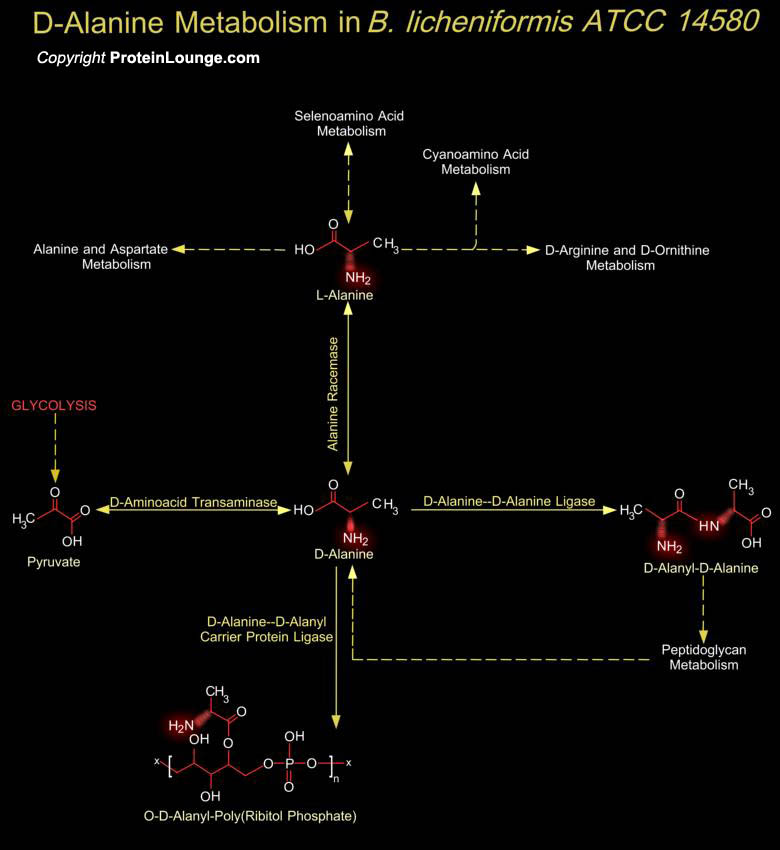
Bacillus licheniformis(B. licheniformis) is a Gram-positive, spore-forming soil bacterium that is used in the biotechnology industry to manufacture enzymes, antibiotics, biochemicals and consumer products. This species is closely related to B. subtilis, and produces an assortment of extracellular enzymes that may contribute to nutrient cycling in nature. Unlike most other Bacilli, which are predominantly aerobic, B. licheniformis is a facultative anaerobe, which may allow it to grow in additional ecological niches. The type strain ATCC 14580 consists of a circular chromosome best studied of all B. licheniformis strains (Ref.1).The cell wall of these Gram-positive bacteria is a unique biopolymer, containing both D- and L-Amino acids. Its basic structure is a[..]
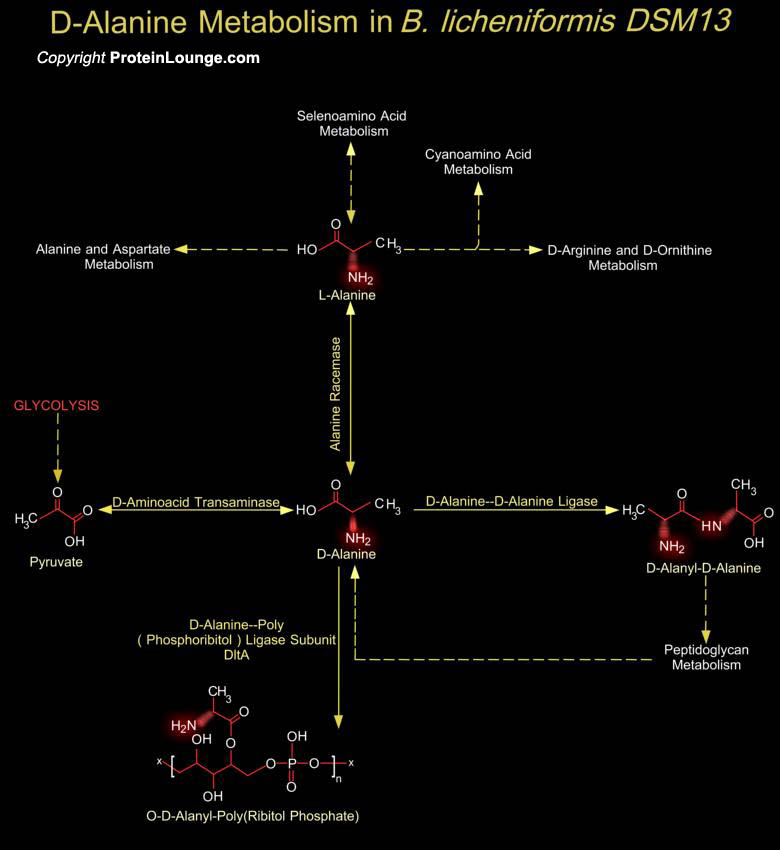
Bacillus licheniformis(B. licheniformis) is a Gram-positive, spore-forming soil bacterium that is used in the biotechnology industry to manufacture enzymes, antibiotics, biochemicals and consumer products. B. licheniformis, B. subtilis, and B. pumilus comprise the subtilis group, which has been associated with a range of clinical conditions, food spoilage such as ropy bread, and incidents of food-borne gastroenteritis. B. licheniformis has also been associated with septicemia, peritonitis, ophthalmitis, and food poisoning in humans, as well as with bovine toxemia and abortions. It is a common contaminant of dairy products. B. licheniformis DSM13 consists of a single chromosome and has a well-conserved secretory system (Ref.1).The cell wall of these Gram-positive[..]
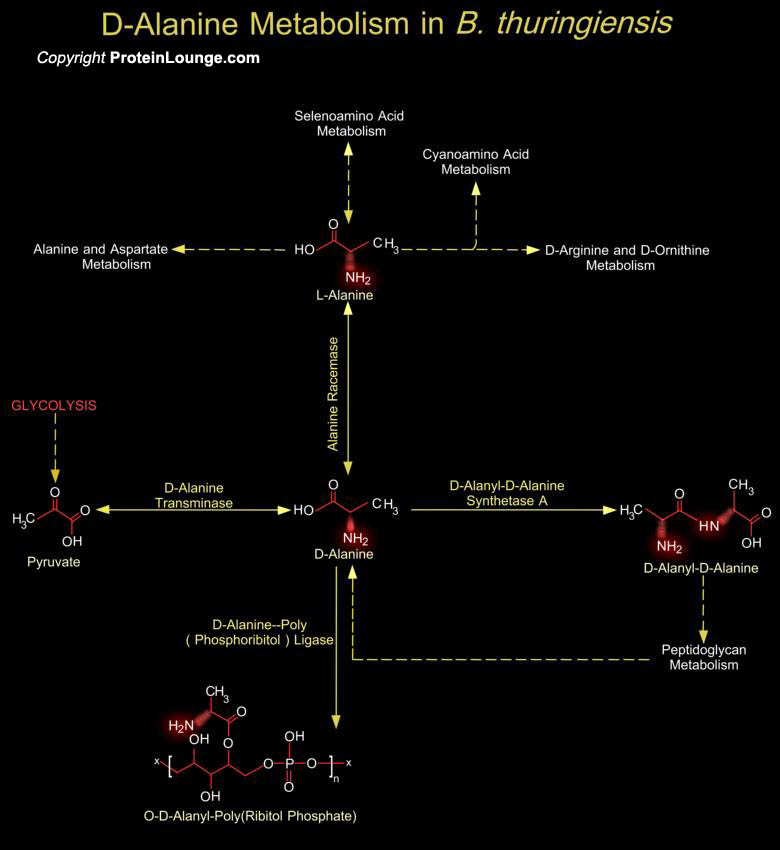
Bacilli are rod-shaped, Gram-positive, sporulating, aerobes or facultative anaerobes. Most bacilli are saprophytes. Due to the metabolic diversity in the genus Bacillus, Bacilli are able to colonize a variety of habitats ranging from soil to insects, to humans (Ref.1). B. thuringiensis (commonly known as 'Bt') is an insecticidal bacterium, marketed worldwide for control of many important plant pests mainly caterpillars of the Lepidoptera (butterflies and moths) but also for control of mosquito larvae and simuliid blackflies that vector river blindness in Africa. It produces intracellular protein crystals toxic to a wide number of insect larvae and is the most commonly used biological pesticide worldwide (Ref. 2 & 3). The cell wall of these[..]
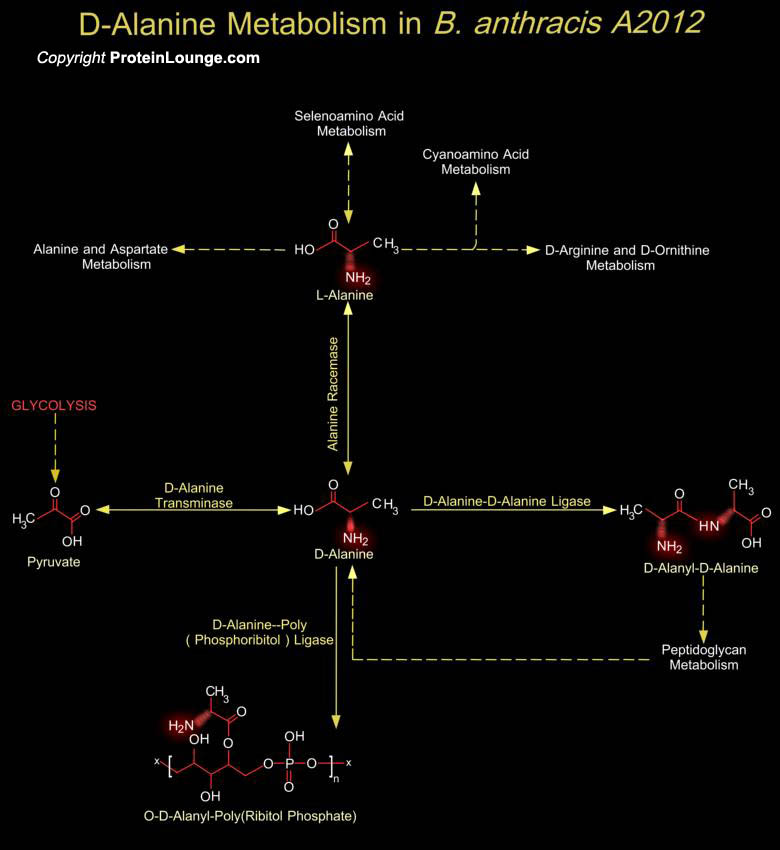
Bacilli are an extremely diverse group of bacteria that include both the causative agent of anthrax (Bacillus anthracis) as well as several species that synthesize important antibiotics. Bacilli are rod-shaped, Gram-positive, sporulating, aerobes or facultative anaerobes. Bacilli exhibit an array of physiologic abilities that allow them to live in a wide range of habitats, including many extreme habitats such as desert sands, hot springs, and Arctic soils. Species in the genus Bacillus can be thermophilic, psychrophilic, acidophilic, alkaliphilic, halotolerant, or halophilic and are capable of growing at pH values, temperatures, and salt concentrations where few other organisms can survive (Ref.1, 2 and 4). Due to the metabolic diversity in the genus Bacillus, Bacilli[..]
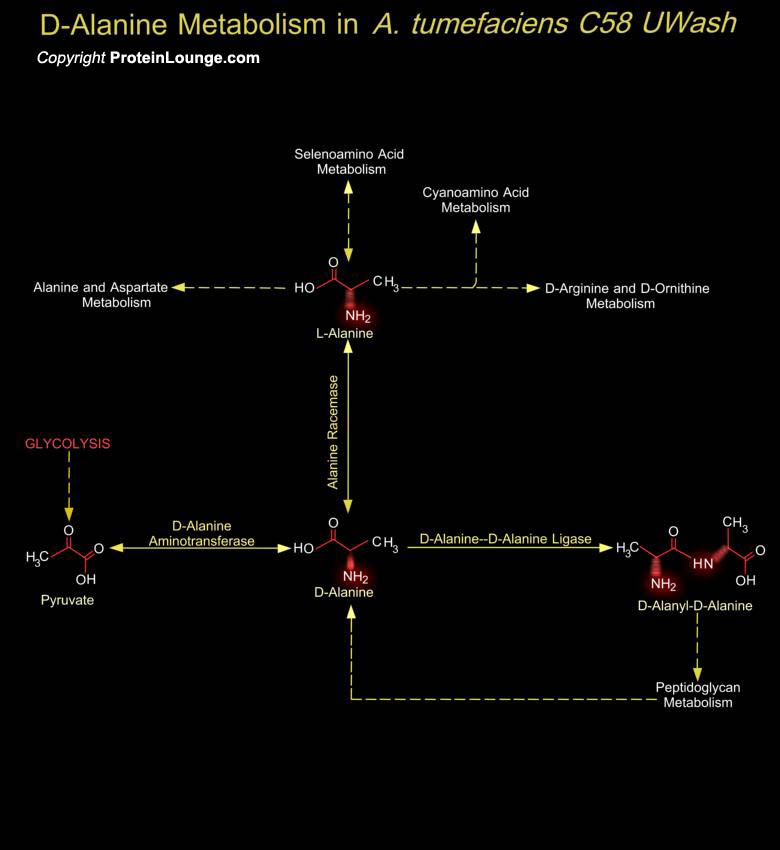
Agrobacterium tumefaciens is a Gram-negative, non-sporing, motile, rod-shaped bacterium, closely related to Rhizobium which forms nitrogen-fixing nodules on clover and other leguminous plants. A. tumefaciens causes crown gall disease of a wide range of dicotyledonous plants, especially members of the rose family such as apple, pear, peach, cherry, almond, raspberry and roses. Basically, the bacterium transfers part of its DNA to the plant, and this DNA integrates into the plant’s genome, causing the production of tumors and associated changes in plant metabolism. The unique mode of action of A. tumefaciens has enabled this bacterium to be used as a tool in plant breeding. In natural conditions, the motile cells of A. tumefaciens are attracted to wound sites by[..]
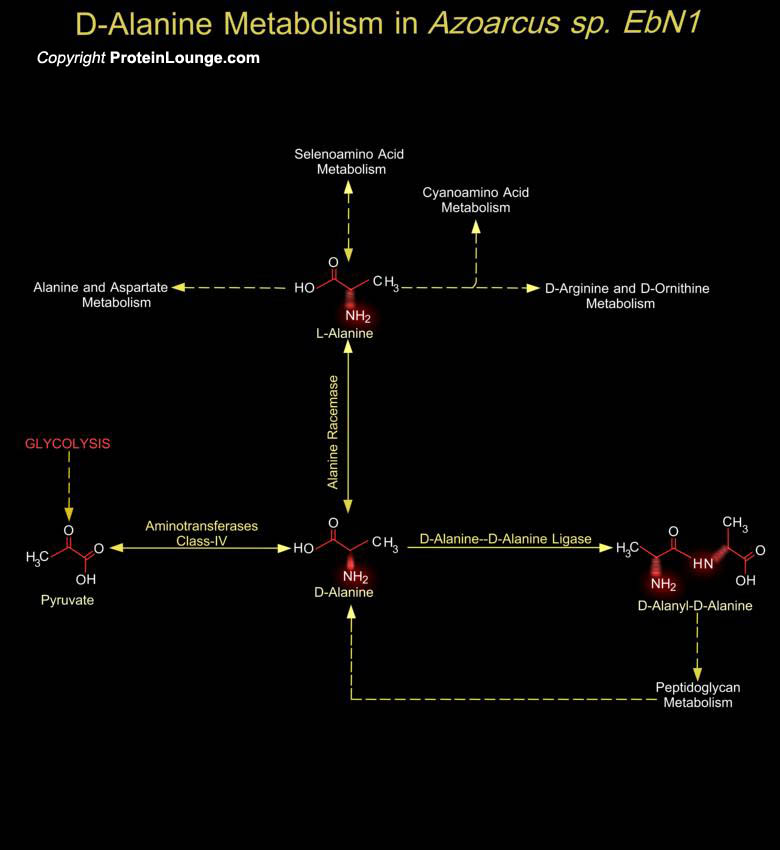
Azoarcus sp. is associated with microbial degradation of aromatic and other refractory compounds, including hydrocarbons in anoxic waters and soils. Strain EbN1 is an aromatic-degrading bacteria found in freshwater and soil habitats. A unique property of strain EbN1 is its capacity to degrade toluene and ethylbenzene via two different, strictly anaerobic pathways. The absence of nitrogen fixation and specific interaction with plants separates EbN1 ecophysiologically from the closely related nitrogen-fixing plant symbionts of the Azoarcus cluster (Ref.1). A key step in peptidoglycan layer assembly and deposition in the cell wall of Azoarcus is the subsequent enzymic cross-linking of one peptidoglycan strand to an adjacent one in cell wall growth. D-Alanine is a central[..]
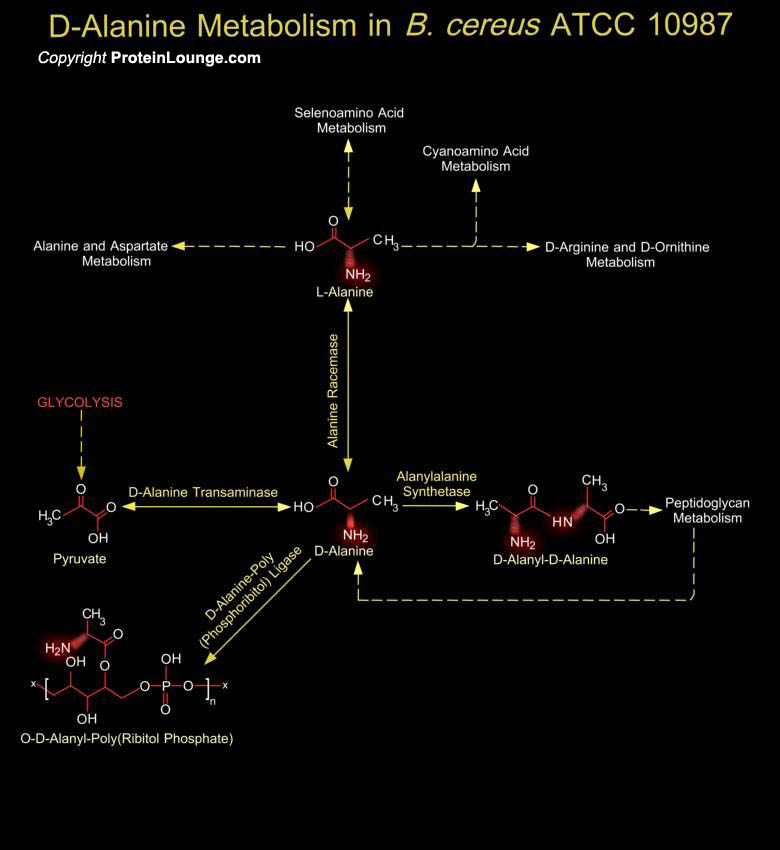
Bacillus cereus is a gram-positive, facultative anaerobic rod-shaped endospore-forming bacterium. B. cereus occurs ubiquitously in soil and in many raw and processed foods such as rice, milk and dairy products, spices, and vegetables. Many strains of B. cereus are able to produce toxins and cause distinct types of food poisoning. B. cereus is an opportunistic pathogen causing food poisoning manifested by diarrhoeal or emetic syndromes. It is closely related to the animal and human pathogen Bacillus anthracis and the insect pathogen Bacillus thuringiensis, the former being used as a biological weapon and the latter as a pesticide. B. cereus ATCC 10987, a non-lethal dairy isolate in the same genetic subgroup as B. anthracis (Ref.1&2).The cell wall of these[..]
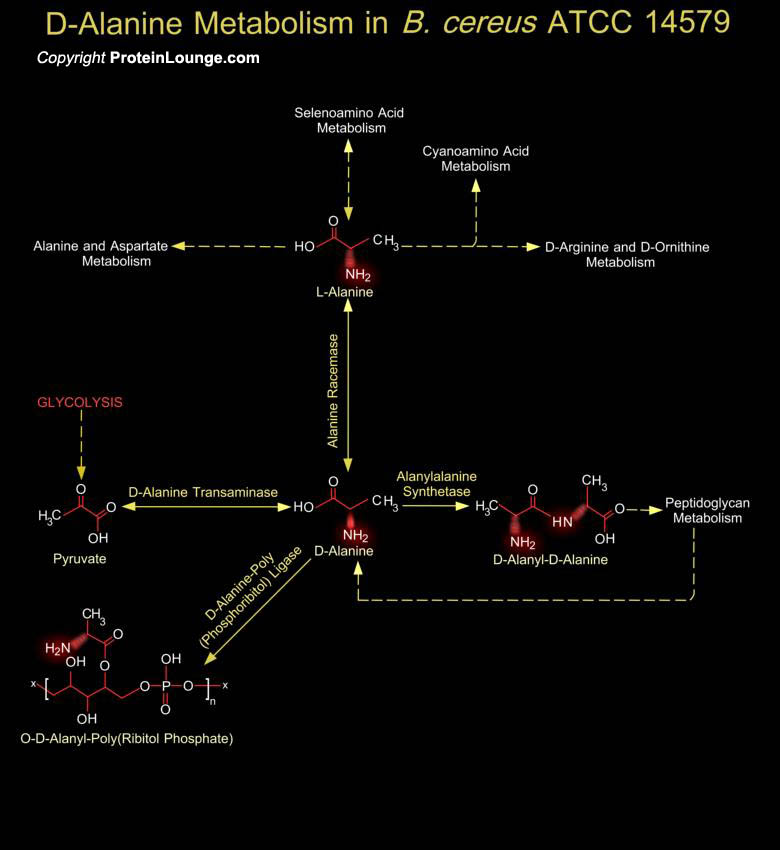
Bacillus cereus is a gram-positive, facultative anaerobic rod-shaped endospore-forming bacterium. B. cereus occurs ubiquitously in soil and in many raw and processed foods such as rice, milk and dairy products, spices, and vegetables. Many strains of B. cereus are able to produce toxins and cause distinct types of food poisoning. B. cereus is an opportunistic pathogen causing food poisoning manifested by diarrhoeal or emetic syndromes. It is closely related to the animal and human pathogen Bacillus anthracis and the insect pathogen Bacillus thuringiensis, the former being used as a biological weapon and the latter as a pesticide. B. cereus ATCC 14579, a non-lethal dairy isolate in the same genetic subgroup as B. anthracis (Ref.1&2).The cell wall of these[..]
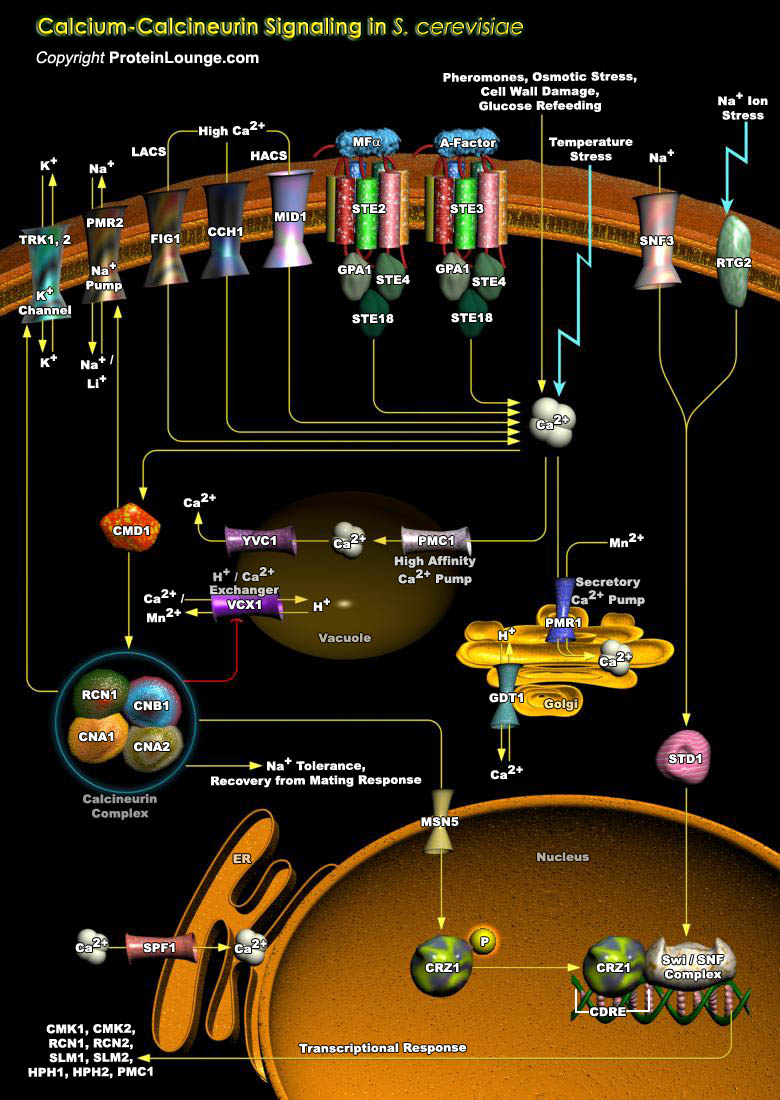
In the yeast S. cerevisiae (Saccharomyces cerevisiae) various stimuli and developmental cues excite calcium (Ca2+) signals, which initiate appropriate downstream responses by changing the conformation of Ca2+ binding proteins. This is usually characterized by a sharp rise in cytosolic free Ca2+ followed by an exponential decrease. The cytosolic calcium homeostasis is maintained and regulated by Ca2+ transporters and sequestrators in the plasma and organelle membranes. Calcium can be either stored in the vacuoles or in secretory compartments of ER and Golgi where the vacuole acts as the main organelle for storage and sink, and the compartmentalization of Ca2+ in the ER/Golgi revealed a pathway for depleting and recycling intracellular calcium (Ref.1).Upon elevation of[..]
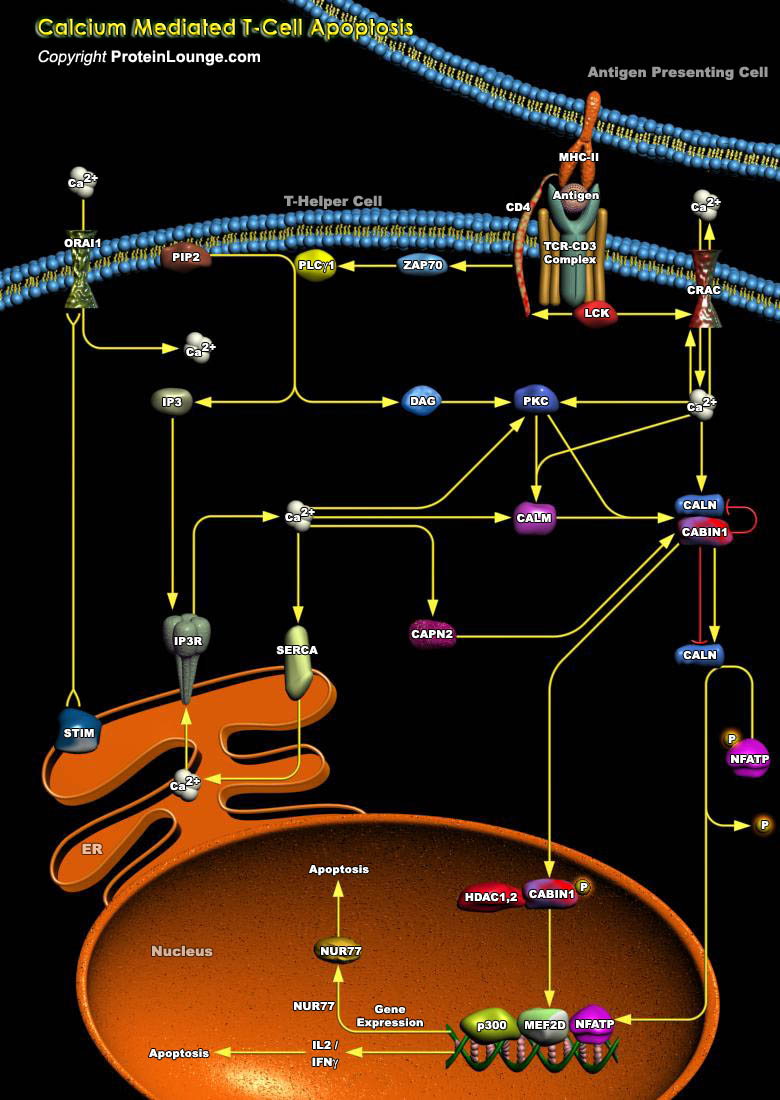
Ca2+ (Calcium) plays a major role in life and death within T-Cells. Elevation of intracellular free Ca2+ is one of the key triggering signals for T-Cell activation by antigen. The binding of antigen, MHC Class-II (Major Histocompatibility Complex Class-II), to the TCR-CD3 (T-Cell Antigen Receptor)-CD3 (CD3 Antigen) triggers the recruitment of a series of tyrosine kinases and substrates to the TCR/CD3/CD4 (CD4 Antigen) Complex, ultimately resulting in the phosphorylation and activation of PLC-Gamma1 (Phospholipase-C-Gamma1). PLC-Gamma1 cleaves PIP2 (Phosphatidylinositol 4,5-bisphosphate) in the plasma membrane to generate DAG (Diacylglycerol), which activates PKC (Protein Kinase-C) and IP3 (Inositol 1,4,5-trisphosphate), that causes entry of Ca2+ to cytosol from two[..]
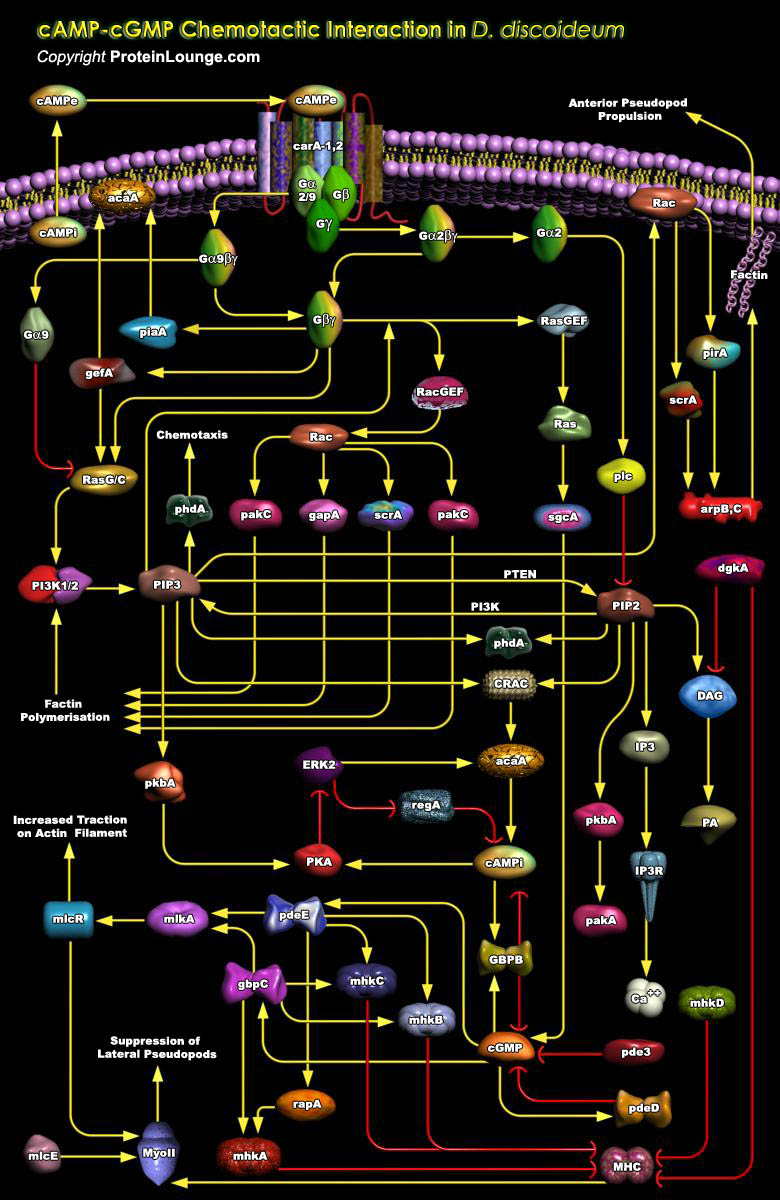
Commonly referred to as slime mold, Dictyostelium discoideum is a species of soil-dwelling amoeba belonging to the phylum Amoebozoa, It is a eukaryote that transitions from a collection of unicellular amoebae into a multicellular slug and then into a fruiting body within its lifetime. Bacteria are attracted to nutrients and repelled from toxic chemicals for their survival. Amoeba exibit movement in response to a chemical stimulus commonly termed as Chemotaxis. D. discoideum secretes the signal in form of cAMP, out of the cell, attracting other amoebae to migrate toward the source. i.e the amoeba dispensing the greatest amount of cAMP secretions. The secretion of the cAMP is then exhibited by all amoebae and is a call for them to begin aggregation. Chemotaxis is a[..]

